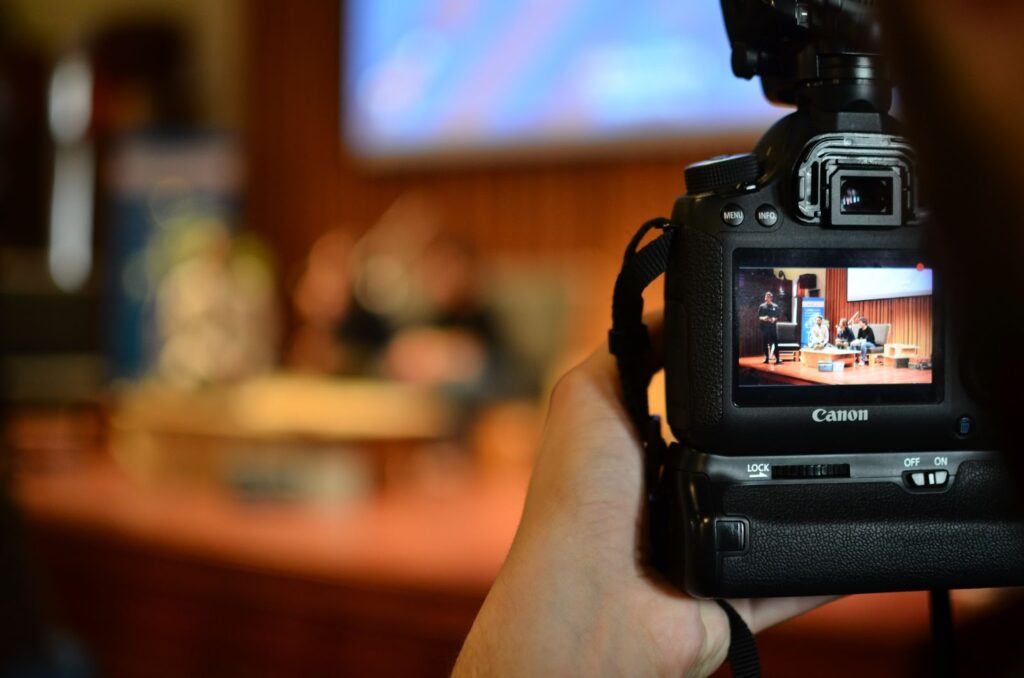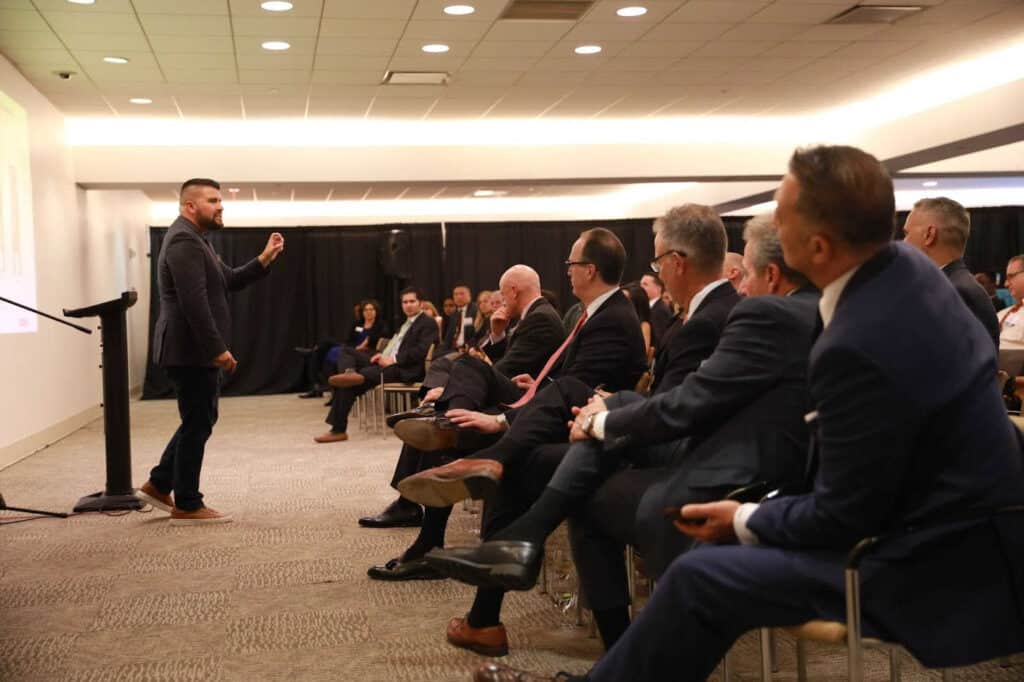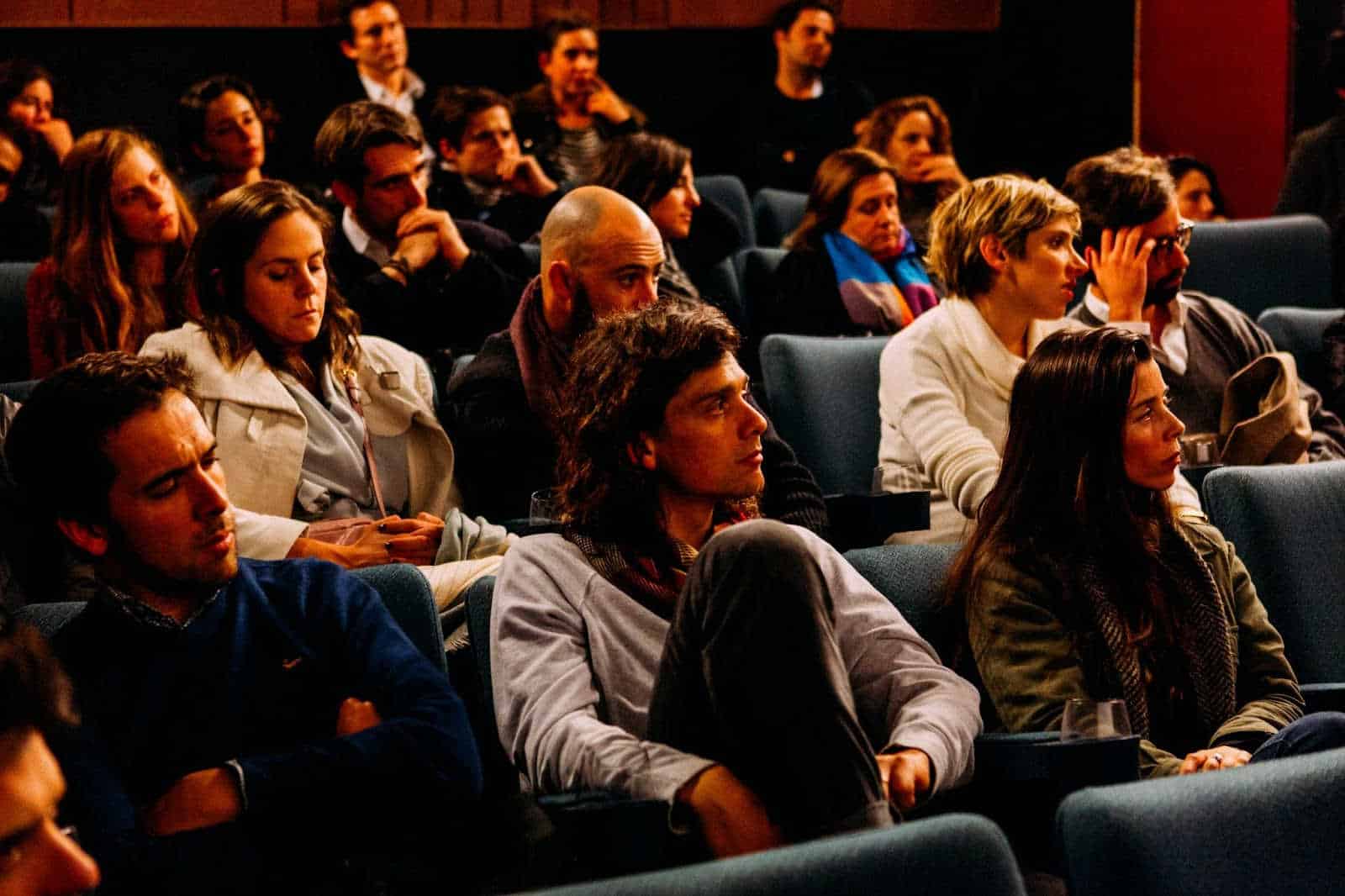Live events are back! Conferences, exhibit booths and networking have returned, and the human element of in-person interactions has brought the sparkle back to events.
Conference organizers are back to testing out new and creative tactics to bring back past event attendees and attract new ones. Everything from paid search and social ads to pre-event teaser videos to old school phone calls are being used once again.
As events move forward, many event organizers are continuing to offer their conferences in hybrid formats. They’ve found that allowing attendees to have the ability to choose how they want to participate is encouraging and expected. With added flexibility and other perks coming into play, such as no travel costs, many events will continue to offer virtual components with which to participate.
Regardless of whether attendees are coming to your sessions physically or tuning in remotely on Zoom, attendee engagement continues to be a hot topic in today’s environment. Conference organizers have a tall order to fill in ensuring their conferences are engaging diverse audience members effectively. More eyes are on them to also make sure that their events are created with inclusivity in mind to accommodate attendees with their varying needs. Live captions for events is one tactic being implemented more regularly which fulfills both needs.
Table of Contents:
- Why Captioning Events Pays Off
- Closed Captioning for Events
- Real Time Captioning for Events
- Closed Captioning Events for On-Demand Viewing

Why Captioning Events Pays Off
There are a variety of attendees who can benefit when you project captions on the screens at your in-person conferences or offer them to those tuning in virtually. Captions are far from just an accessibility tool designed to help those who are Deaf or hard of hearing. They are absolutely critical for those audience members to participate in your events with equity, but so many others can also engage more effectively with captions.
In addition to individuals who are Deaf or have hearing loss, captions can help:
- Remote attendees watching without the sound
- Non-native speakers & international attendees participating
- Individuals navigating learning disabilities, such as ADHD
- People sitting in the back who may have missed what was said
- Everyone, offering them a helpful, additional visual aid
Closed Captioning for Events
Captions can offer an incredible tool to engage all of these attendees more effectively, plus captions are low cost and easy to produce (if only your entire events were). Additionally, depending on the nature of your event, some conference organizers might be liable if they do not offer accessibility services to their attendees.
With legislation like the Americans with Disabilities Act (ADA) and the Rehabilitation Act of 1973 to consider, it’s better to proactively offer captions to make your event inclusive from the get-go.
There’s no point in risking the bad press which could come from not captioning an event or making it accessible, and that dominating the headlines rather than the amazing speakers and sessions you’ve put together. Creating an inclusive event experience with captions as a start can really help to assuage any concerns.

Real Time Captioning for Events
For events to be inclusive, it means that access needs to be provided on-the-spot, not with a delay. This reality means offering live captioning for events. Your event captions should appear as the speaker is talking and be synced to them as closely as possible to create the best experience. Real time captioning can be projected on screens you set up by the stage or around the room, as well as embedded into Zoom, Webex or other conferencing platforms you may be using for remote attendance.
It’s important to note that captioning live is no easy feat in-house. It takes highly trained professionals or a captioning software to help you produce the captions in real time with the cadence you need them. Additionally, real time captions for live events present the greater likelihood for errors to occur, with everything happening quickly. Having a partner like Verbit can help you produce captions for live events easily.
When captioning live events, you of course want to deliver captions that are accurate. Inaccurate captions shown on screen at events where people paid for their tickets isn’t a good look. Professional-looking captions take professional expertise, so it’s best to avoid assigning someone from your internal team to type them out.
Verbit can offer you access to professional human captioners who are highly skilled at handling live events. The likes of CNN, BBC, FOX and other news networks trust the Verbit company for their live captions for broadcasts being viewed by millions. These same captioners can help to service your events and deliver captions that will engage and include your audience members effectively.

It’s also helpful to make sure you’re using closed captioning software for live events, so that individuals viewing remotely can turn the captions on or off as they please. Some individuals won’t want to watch closed captioning for live events, so they’ll be grateful for the flexibility to shut them off.
Closed Captioning Events for On-Demand Viewing
Closed captioning also is becoming a greater consideration post-event. With so much time, energy, effort and great content coming out of events being produced, many are trying to give their events more exposure after-the-fact.
Many conference organizers are posting events in their entirety, individual sessions or clips with strong sound bytes from their events online for viewing. Offering on-demand viewing allows attendees to go back and reference what was said and catch sessions they missed. It also allows people who weren’t able to make it day-of to be able to consume the content and reap its benefits.
The same considerations which were made to offer real time captions for live attendees should also be made for on-demand viewers.
Here’s why:
- It’s the right thing to do: You’re likely to have viewers with disabilities consuming your content who need captions to consume your videos with equity.
- You might be liable: It can also be required by WCAG guidelines to caption the content you’re placing on your website to make it accessible to individuals with disabilities.
- International viewer accommodations: On-demand viewers can be based anywhere in the world, so international viewers can greatly benefit in this case as well from access to captions as they watch your content.
- Silent viewing: Expect that people viewing your events on demand might be watching from the office, while commuting or at home with family members. Captions allow them to watch the on-demand event silently but still follow along
- Longer view times: Captions are shown to increase view times and completion rates for your videos, as they increase engagement.
While closed captioning can really help to include your attendees (both live and on-demand) who are Deaf, hard of hearing or navigating learning disabilities, note that your attendee pool will likely be much more diverse than just those individuals. For example, other solutions such as audio description, can help to include individuals with vision loss as well.
Assist Additional Attendees with Event Audio Description
Around 12 million individuals ages 40 and older in the United States alone are Blind or have low vision. Audio description is a surefire way to help these individuals attend your events and follow along with equity.
Audio description provides additional audio narration for videos or events as they happen in real time or are recorded. They describe the visual elements that are often not spoken out loud. For on-demand events, these narrations can be inserted into the video’s natural pauses. Audio description offers clear, concise and objective language to describe what was shown. Audio description can also be delivered via headsets to attendees at your events.
You can learn more here about Verbit’s audio description offerings and capabilities for your events and recorded event video content.
Increasing Event Engagement & Accessibility
As noted, driving attendee engagement at what can be day-long or week-long events can be challenging. Making sure all attendees have what they need to participate and feel included can also feel tricky without the right partner assisting you.
The Verbit company is working with major conference and event producers to help with the accessibility of their live events, broadcasts, recorded event content and much more. Making events more accessible, doesn’t just help those who rely on accommodations; it can help to improve the engagement of every single attendee.
Contact us here to learn more about how we can help to provide dedicated support for your events – big or small, virtual, in-person or hybrid alike.




